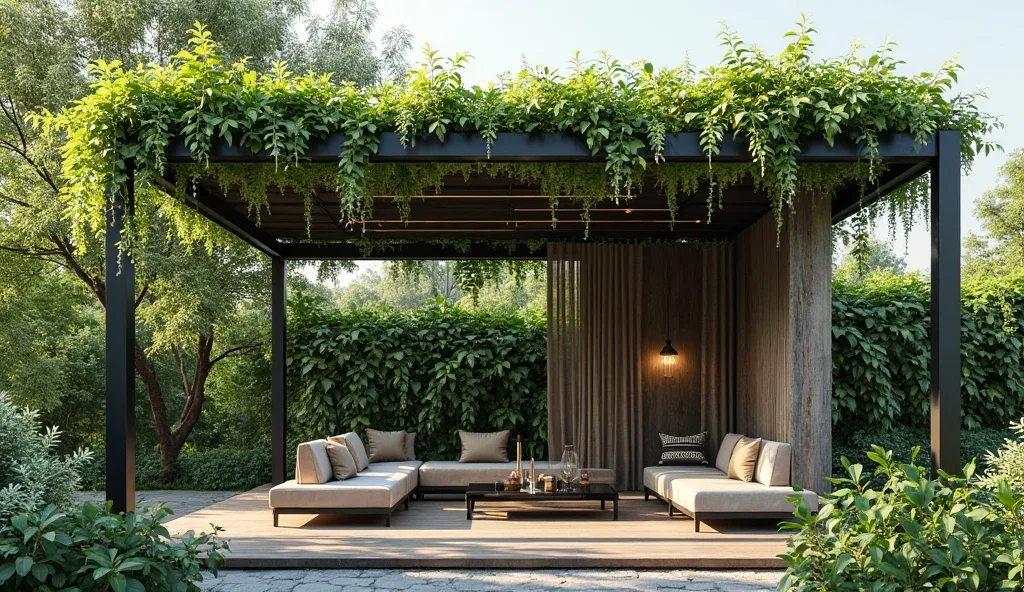You know that feeling when you scroll through those dreamy outdoor living photos and wonder why your backyard doesn’t look like a luxury resort? Maybe you’ve got a perfectly decent patio, but it’s missing that special something that makes you actually want to spend time out there instead of just walking past it to get to your car.
The truth is, most backyards are functional but forgettable. We set up a basic table and chairs, maybe throw in some string lights, and wonder why it never feels quite right. But here’s what I’ve learned: the difference between a backyard that gets used and one that gets loved comes down to creating real destination spaces.
A well-designed gazebo isn’t just outdoor furniture—it’s like adding another room to your house, except this room has better views and makes every meal feel like vacation. Whether you’re dealing with a sprawling suburban lot or a compact urban space, the right gazebo design can completely transform how you experience your outdoor area.
Ready to create that backyard everyone wants an invitation to? Let’s explore some ideas that’ll make your neighbors seriously reconsider their own outdoor setup.
Build Your Foundation Right
Before we dive into all these gorgeous design options, let’s talk about what separates amateur gazebo projects from the ones that actually get used and loved for years.
Location Is Everything – Your gazebo placement determines whether it becomes the heart of your outdoor living or just expensive lawn art. Think about sight lines from your house, natural shade patterns throughout the day, and how people will naturally flow through your space.
Weather Reality Check – Choose materials and designs that can handle your actual climate, not just look good in photos. If you get heavy snow, that delicate fabric roof might not be your best bet. Coastal areas need materials that won’t corrode from salt air.
Scale Matters More Than You Think – A gazebo that’s too small feels cramped and gets avoided. Too large and it overwhelms your space and budget. Measure twice, visualize three times before committing to any size.
Integration Over Isolation – The best gazebos feel connected to the rest of your outdoor space through materials, color palette, or sightlines. They should enhance your landscape, not compete with it.
Design Like a Resort Pro
The most successful outdoor spaces borrow principles from places we love to visit—those resorts and restaurants where every detail feels intentional and cohesive.
Create Zones of Activity – Think beyond just seating. Consider dining areas, lounging spots, maybe even workspace if you’re into outdoor office vibes. Different areas serve different moods and times of day.
Lighting Strategy That Works – One type of lighting won’t cut it. You need ambient lighting for evening relaxation, task lighting for dining or reading, and maybe some accent lighting to highlight architectural features.
Comfort Without Compromise – Beautiful design means nothing if people aren’t comfortable. Plan for wind protection, privacy screening, and furniture that actually invites you to stay longer than five minutes.
Seasonal Adaptability – The best gazebos work in multiple seasons. Think about how you can modify the space for different weather or activities throughout the year.
Top 12 Gazebo Ideas
1. Rooftop Sky Sanctuary
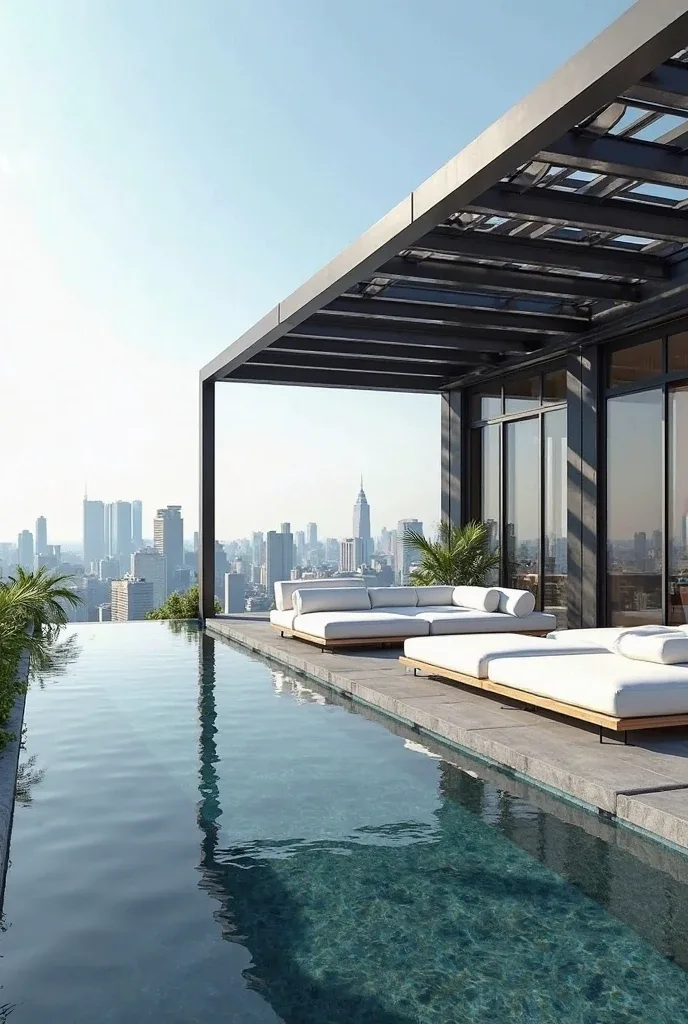
Transform your rooftop into a private retreat with a sleek black-framed gazebo featuring clean geometric lines. Position it alongside your existing rooftop features—maybe near that HVAC unit you’ve been trying to camouflage—and suddenly your maintenance access becomes part of a sophisticated outdoor room.
The magic happens when you integrate panoramic views into the design. Use minimal furniture so the structure frames the skyline rather than competing with it. White or neutral seating keeps the focus on those million-dollar views you’re already paying for.
This works particularly well in urban settings where rooftop space is precious. You’re creating a destination that feels completely separate from street-level life.
2. The Perfect Circle
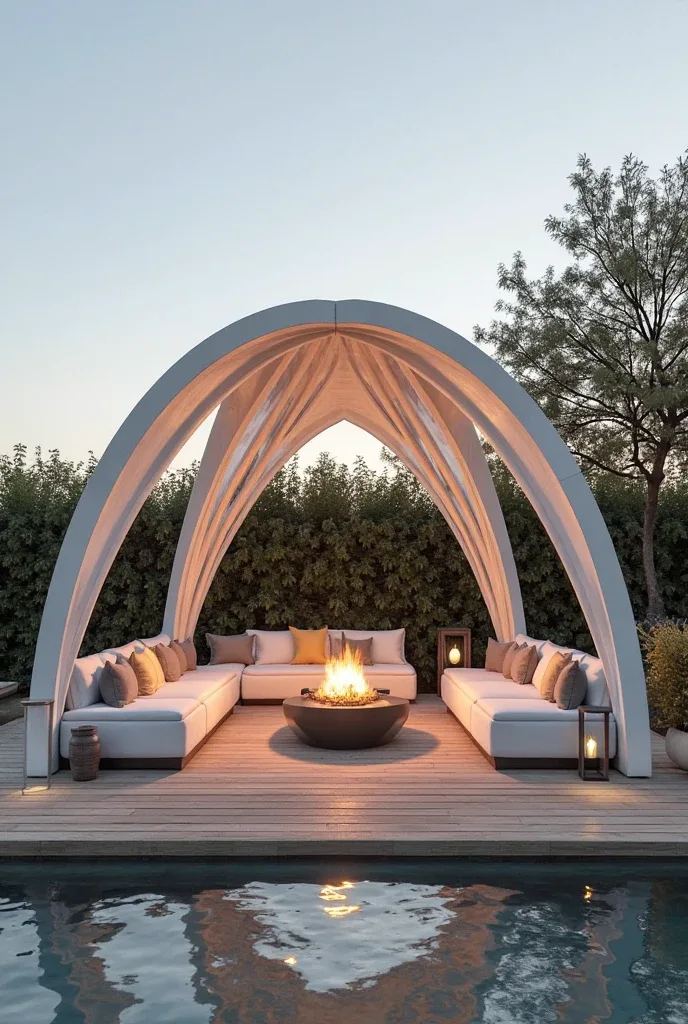
Circular gazebos break away from predictable rectangular outdoor furniture arrangements and create natural conversation spaces where everyone faces inward. Use curved white beams that sweep upward to form a sculptural canopy—it’s like outdoor architecture that doubles as art.
The key is centering everything around a focal point, whether that’s a fire feature, a stunning planter, or just really comfortable seating arranged in the round. The curved roof creates intimacy while still feeling open to the sky.
This design works especially well if your yard lacks strong architectural features. The gazebo becomes the statement piece that organizes everything else around it.
3. Weather-Smart Retractable Design
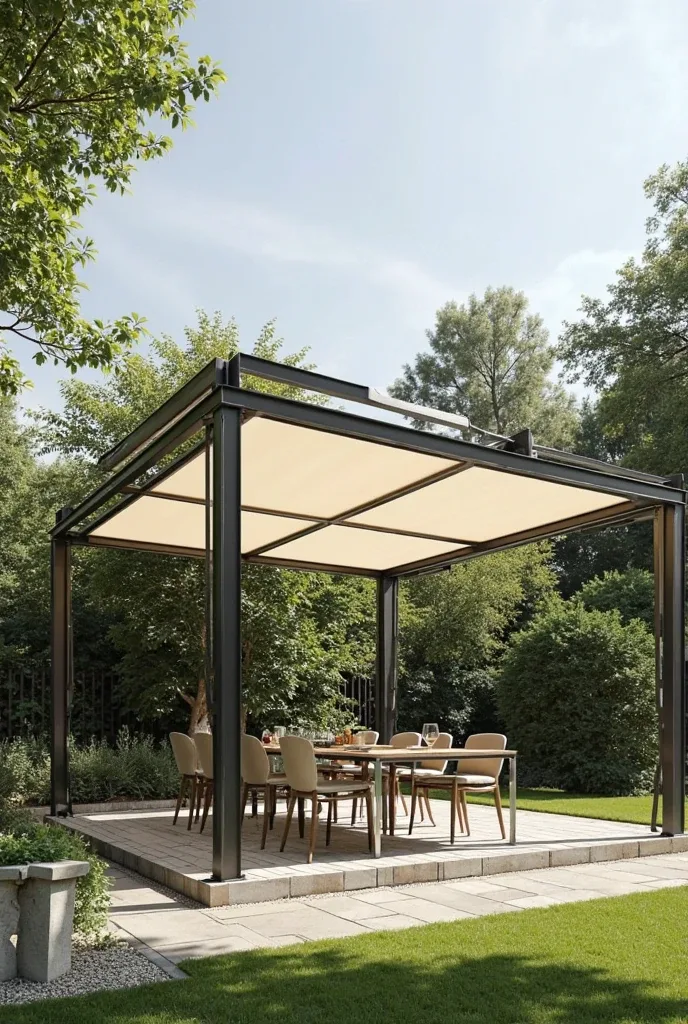
Nothing kills outdoor dining plans faster than unexpected weather changes. A retractable roof system gives you complete control over your environment—full sun when you want it, instant shade when you need it.
Choose neutral fabric panels that complement rather than compete with your home’s exterior. The steel framework should be substantial enough to handle wind but minimal enough to disappear visually when the roof is open.
This is particularly genius for unpredictable climates where conditions change throughout the day. Your morning coffee setup can transform into protected evening dining space.
4. Sunken Living Room Vibes
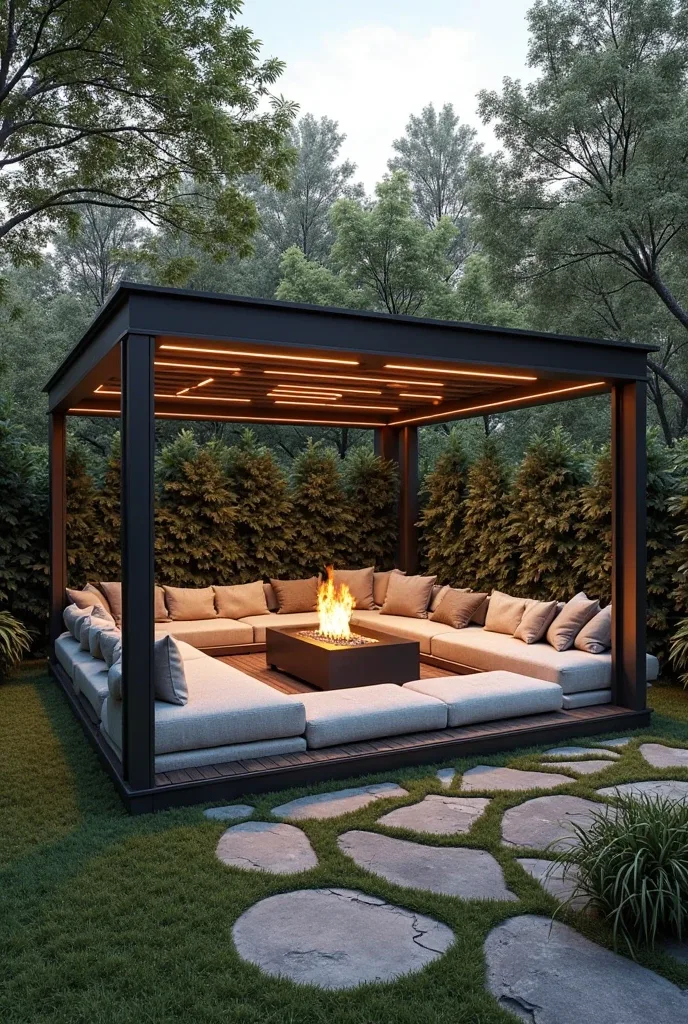
Create the outdoor equivalent of a conversation pit by building your gazebo around a lowered seating area. This automatically makes the space feel more intimate and intentional—like you’ve carved out a special retreat rather than just plopping furniture on a deck.
Surround the sunken area with built-in seating topped with weather-resistant cushions. The gazebo structure overhead defines the space while integrated lighting makes evening gatherings feel magical rather than just adequately lit.
The elevation change also helps with privacy and wind protection, making the space more comfortable even when conditions aren’t perfect.
5. Architectural Statement Piece
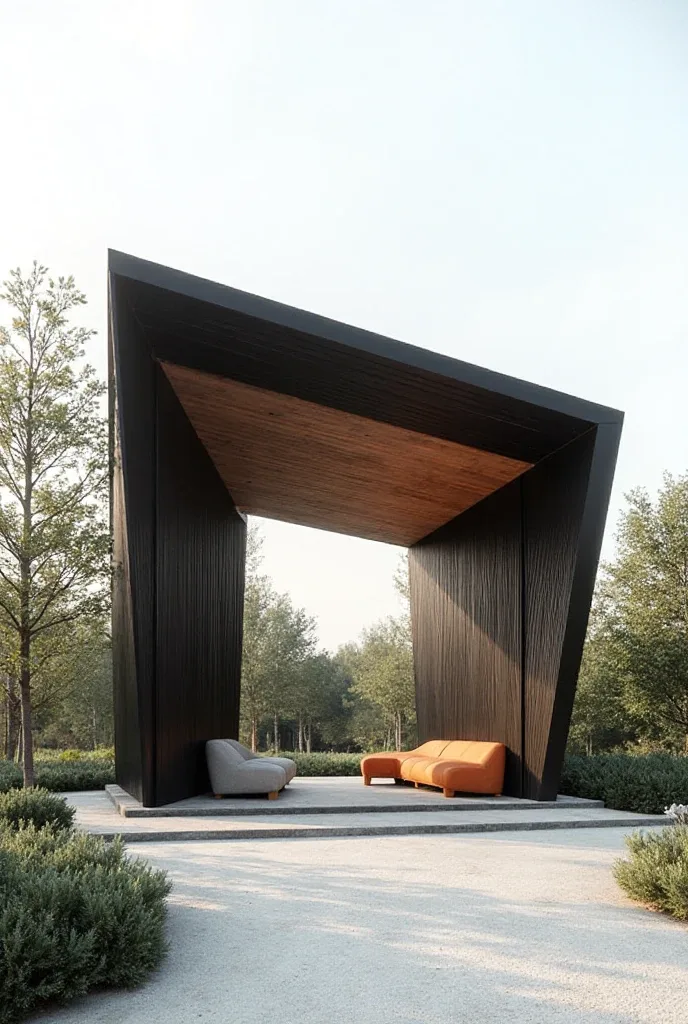
Sometimes your gazebo should be the bold focal point that everything else revolves around. Overlapping roof planes in contrasting materials—think black steel meeting warm wood—create visual interest that’s sophisticated rather than busy.
Keep everything else minimal so the architecture can be the star. Choose furniture with clean lines that complement rather than compete with the geometric roof structure. The landscaping around it should enhance the sculptural quality.
This approach works well on larger properties where the gazebo can be appreciated from multiple angles and distances.
6. Glass-Walled Elegance
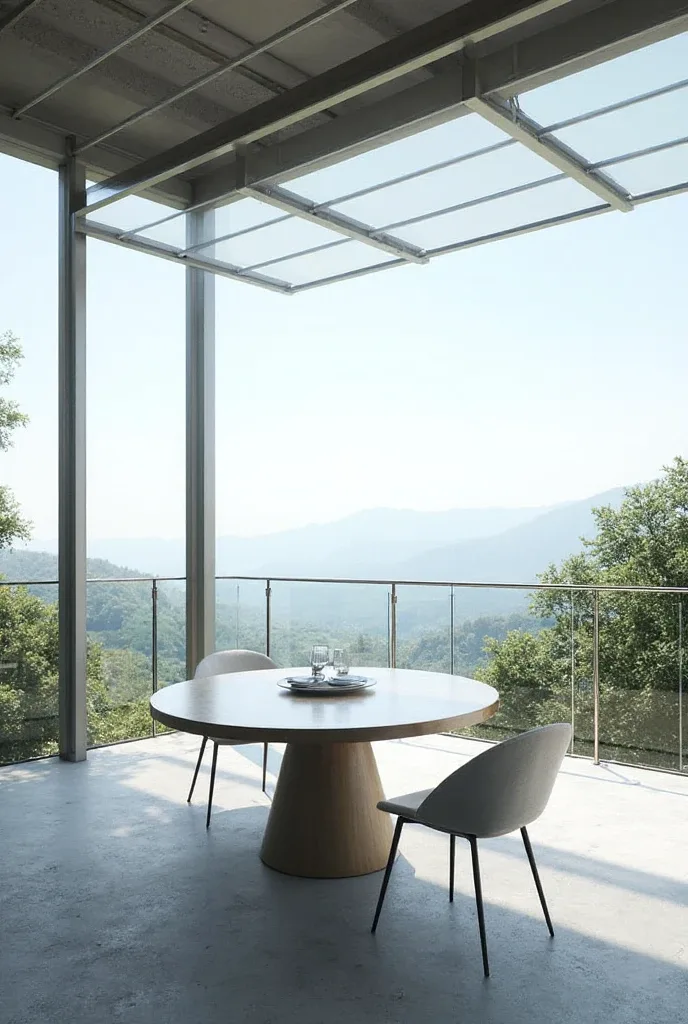
Frameless glass railings give you protection from wind while maintaining unobstructed views—perfect for properties with scenery you don’t want to hide behind traditional railings or solid walls.
The key is keeping the structural elements minimal so the glass can do its job of providing safety without visual barriers. This creates that luxury resort feeling where inside and outside blend seamlessly.
Position this style where it can take advantage of your best views, whether that’s landscaping, water features, or just a well-designed garden area.
7. Future-Forward LED Integration

Built-in LED lighting transforms your gazebo from daytime-only space into an evening destination that feels genuinely special. Run LED strips along every structural beam to create a glowing canopy overhead.
The lighting serves double duty—providing practical illumination for dining or entertaining while creating dramatic ambiance that makes ordinary Tuesday nights feel like occasions worth celebrating.
Use neutral-colored seating and materials so the lighting effect can be the main event. This is particularly striking in contemporary settings where the high-tech feel fits naturally.
8. Living Roof Innovation
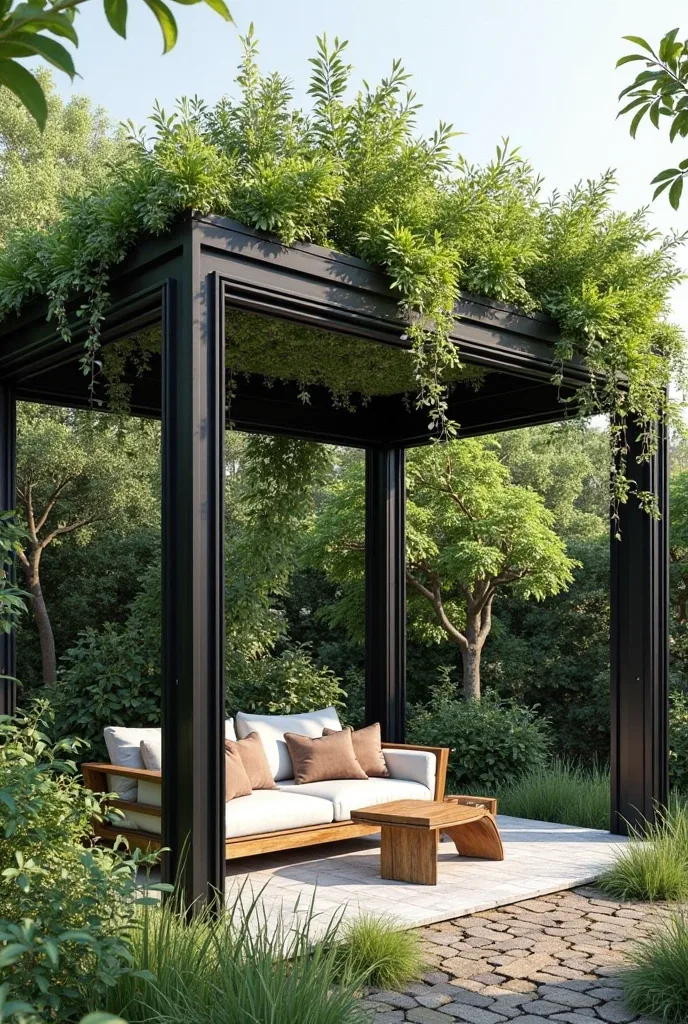
A gazebo with a green roof takes sustainable design beyond just using eco-friendly materials—it actively contributes to your landscape while providing shelter below.
The structural framework needs to be engineered for the additional weight of soil and plants, but the payoff is a structure that feels integrated into your garden rather than imposed upon it.
Choose low-maintenance plantings suited to your climate and roof conditions. Sedums and other succulents often work well, creating texture and seasonal interest without requiring complex irrigation systems.
Also Read: 11 Backyard Wedding Must-Haves That’ll Make Your DIY Day Feel Like a Million-Dollar Event
9. Curved Steel Drama
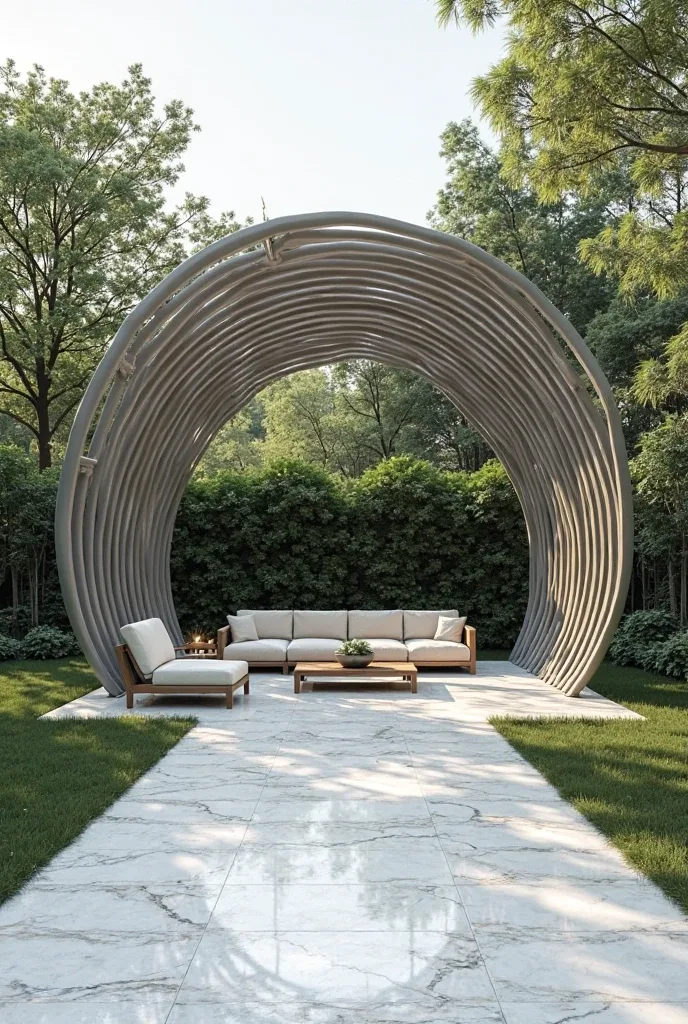
Sweeping curved steel arches create a gazebo that’s pure architectural sculpture—the kind of statement piece that makes your backyard feel like it belongs in a design magazine.
The curved lines soften what could be a harsh industrial material, creating something that feels both strong and graceful. Pair it with equally sophisticated flooring like natural stone or polished concrete.
This style works particularly well in contemporary landscape settings where the dramatic architecture can be appreciated without competing with too many other design elements.
10. Poolside Glass Sanctuary
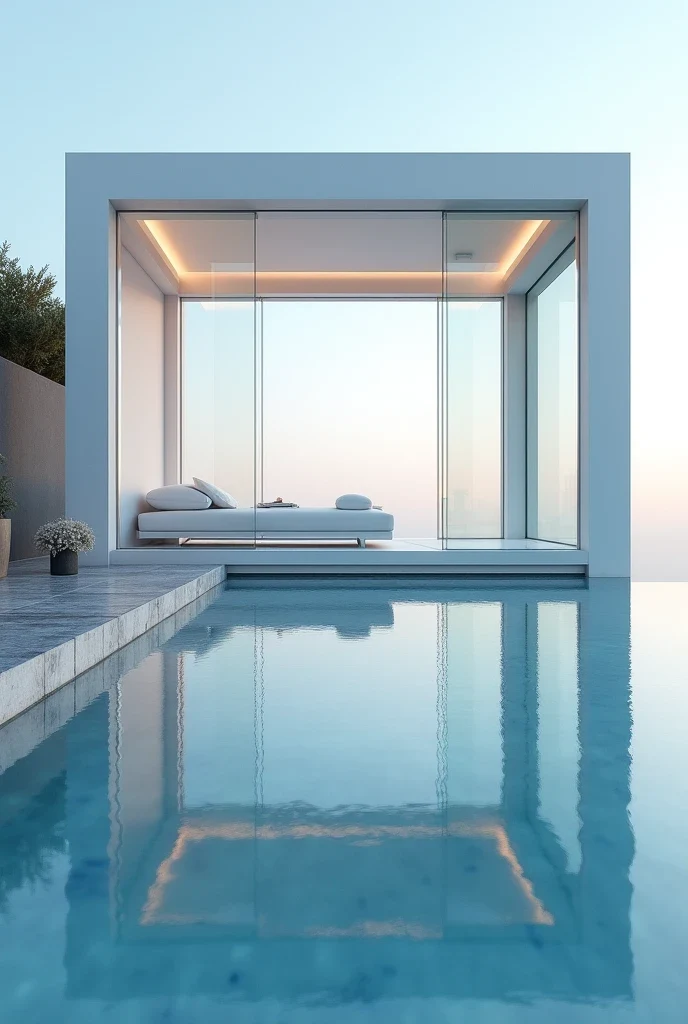
Create an indoor-outdoor room right next to your pool with glass walls that provide wind protection while maintaining that open-air feeling. The transparency keeps the structure from blocking views or feeling closed-in.
Position seating to take advantage of the reflective qualities of the water—it’s like having a natural light show as the water creates moving patterns on the ceiling and walls throughout the day.
This works especially well for entertaining because it creates a sophisticated lounge area that’s connected to pool activities but separate enough for non-swimmers to be comfortable.
11. Central Fire Feature Focus
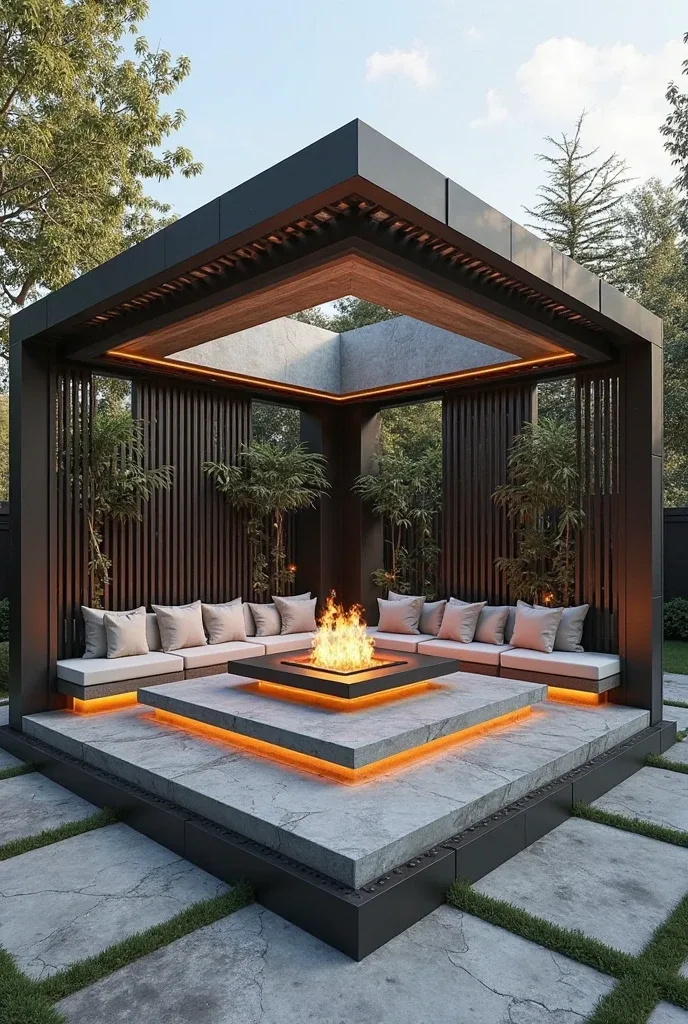
Design your entire gazebo around a modern fire element as the focal point. Built-in seating around the perimeter creates natural gathering spaces while keeping the center open for the fire feature to be appreciated from every angle.
Use materials that complement fire—steel and stone work particularly well, creating a palette that feels both industrial and natural. The fire element makes the space usable in cooler weather and creates natural ambiance for evening gatherings.
This is perfect for areas where you want year-round outdoor living capability, turning your gazebo into a destination regardless of season.
12. Sculptural Wave Design
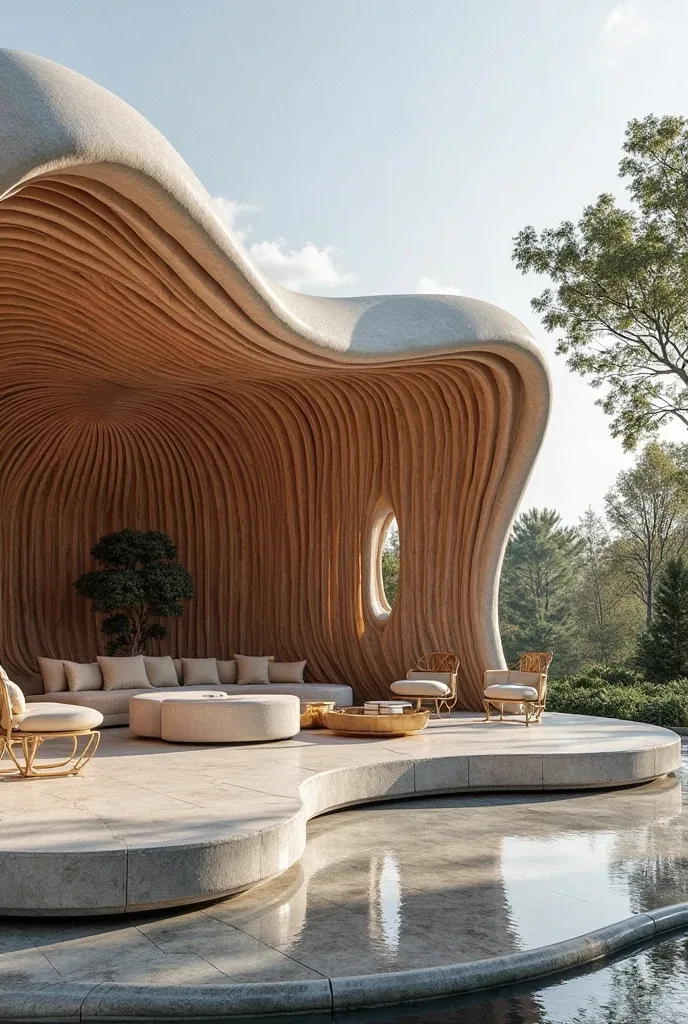
Sometimes your gazebo should be pure art that happens to provide shelter. Wave-shaped wooden beams create a roof structure that’s fascinating to look at from below while providing practical shade and rain protection.
The organic curves contrast beautifully with hard landscaping elements like stone flooring or geometric planters. Choose furniture with simple lines so the architectural drama can be the main attraction.
This approach works well when your gazebo will be visible from inside your house—it becomes a piece of functional sculpture that enhances your view year-round, not just when you’re using it.
Making It Happen
The most important thing about any gazebo project is choosing a design that fits how you actually live, not just how you think you should live. If you’re not really a fire-pit-gathering type of family, don’t build your design around that fantasy.
Think about the times you most want to be outside, what activities you wish you had better space for, and what would make you choose your backyard over going somewhere else for relaxation or entertainment.
The best gazebos are the ones that get used regularly, not the ones that just photograph well. When you find yourself looking forward to your morning coffee out there or automatically suggesting outdoor dinner to guests, you’ll know you’ve created something that truly works for your life.

